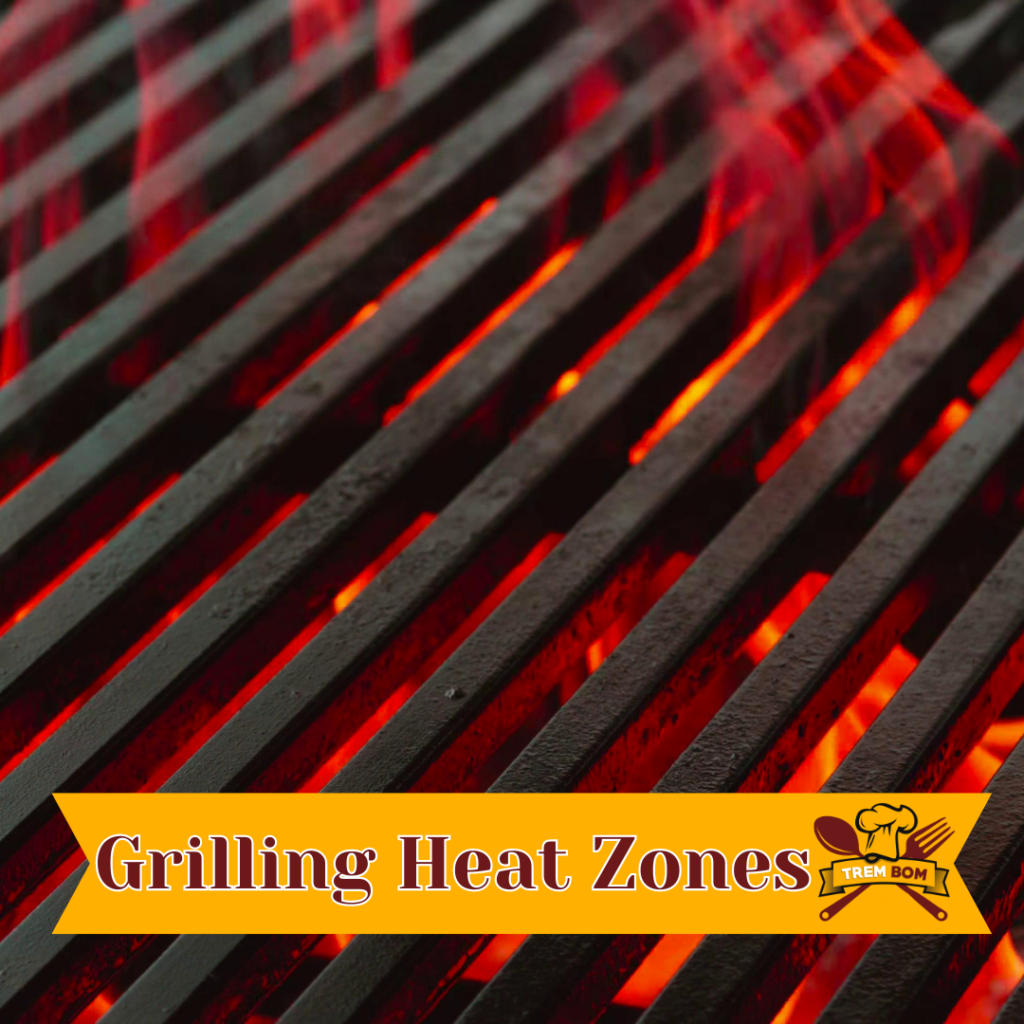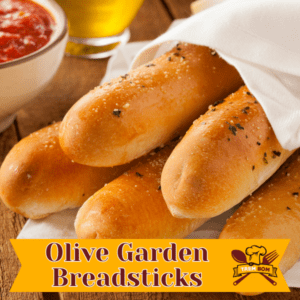
Grilling is a beloved pastime for many, but achieving the perfect cook can be a challenge. The secret to success lies in understanding heat zones – specifically, the difference between direct and indirect heat. By mastering these two techniques and setting up your grill accordingly, you can elevate your grilling game and impress your guests with perfectly cooked meals every time.
Whether you’re using a charcoal grill or a gas grill, understanding heat zones is key to achieving optimal results. Direct heat is perfect for high-heat grilling and searing, while indirect heat creates a cooler zone for low and slow cooking. By utilizing both techniques and setting up your grill for two-zone grilling, you can achieve the perfect balance of heat for any type of dish.
Key Takeaways:
- Grilling relies on heat zones for optimal cooking.
- Direct heat is best for high-heat grilling and searing.
- Indirect heat creates a cooler zone for low and slow cooking.
- Setting up your grill for two-zone grilling allows for the perfect balance of heat for any dish.
- Understanding heat zones is crucial for achieving perfect grilled meals every time.
Setting up Your Grill: Direct and Indirect Heat Zones Explained
Before we dive into the specifics of direct and indirect heat, it’s crucial to understand how to set up your grill for these heat zones. Whether you’re using a charcoal grill or a gas grill, there are techniques to create distinct areas of heat.
For a two-zone grilling setup, start by dividing your grill into two distinct zones: a direct heat zone and an indirect heat zone. This can be done by arranging your charcoal or burners to create distinct areas of heat.
When setting up your charcoal grill, use a chimney starter to ignite the charcoal. Once the coals are ready, dump them onto one side of the charcoal grate for the direct heat zone. Leave the other side empty for the indirect heat zone.
When setting up your gas grill for two-zone grilling, adjust the burners so that one side is set to high heat for the direct heat zone and the other side is set to low heat for the indirect heat zone.
To use direct heat, place your food directly over the heat source in the direct heat zone. This is perfect for achieving a good sear on your steak or for cooking food quickly.
To use indirect heat, position your food away from the direct heat source in the indirect heat zone. This cooler zone is perfect for cooking food low and slow, allowing for gentle and even cooking without the fear of burning.
By using a two-zone setup, you have the flexibility to utilize direct heat for searing and indirect heat for finishing cooking. This setup also allows you to control the temperature better, providing a more even cooking experience for your food.
Now that you know how to set up your grill for two-zone grilling, it’s time to explore the specifics of cooking with direct and indirect heat. Keep reading to learn more about these heat zones and how they can take your grilling game to the next level.
Direct Heat: Searing and High-Heat Grilling
Direct heat is all about cooking food directly over the heat source. It’s the hot zone of your grill and perfect for searing steaks and achieving those coveted grill marks. When it comes to grilling, the direct heat zone is where you want to be. This method of direct heat grilling allows you to cook your food quickly and achieve a delicious sear.
One of the advantages of direct heat is that it allows you to finish cooking your food directly over the heat source. This comes in handy when you want to create those perfect grill marks that we all love. Not to mention, the high and low heat that the direct zone of your grill allows for is perfect for a variety of cuts of meat.
Make sure to keep the grill lid open when using direct heat. This will allow for better control of the temperature and prevent the food from drying out. Additionally, flipping your food frequently will help ensure an even cook and prevent burning.
Overall, when it comes to direct heat grilling, the key is to keep a close eye on your food and be patient. The results will be well worth it, leaving you with perfectly cooked and juicy meats with those beautiful grill marks.
Indirect Heat: Low and Slow Cooking
Indirect heat is a game-changer when it comes to changing your grilling game. This method involves cooking food away from the direct heat source and using the cooler zone of the grill to control the temperature. By placing coals on one side of your grill and leaving the other side empty, you create a cool zone that allows for gentle and even cooking. The indirect zone is the perfect cooler zone that is best used for smoking, roasting, and baking. This zone is ideal for cooking larger cuts of meat, such as whole chickens and roasts, ensuring they are cooked through without burning the outside.
When using indirect heat, radiant heat is the key to achieving low and slow cooking. This method of cooking uses convection heat created by the grill to cook food indirectly. The radiant heat penetrates the food and cooks it gently, allowing the flavors to develop and intensify over time. Using the indirect zone to finish cooking food directly over the heat source can help achieve the perfect sear and finish.
It’s essential to use the indirect heat zone on one side of your grill and the direct heat zone on the other side, creating a distinct area for each method of cooking. This method of cooking is the perfect cooler indirect zone for cooking low and slow, allowing you to control the grill’s heat for each specific food.
Overall, indirect heat is a simple but powerful method of cooking that can change your grilling game. By creating two distinct zones on your grill, you can cook your food to perfection and enjoy tender, juicy results every time.
Two-Zone Grilling: The Perfect Balance of Direct and Indirect Heat
Two-zone grilling is one of the most versatile methods of outdoor cooking. It allows you to create distinct zones on your grill, using different heat levels to cook food to perfection. Whether you’re using a specific grill or charcoal grill, the two-zone setup provides the flexibility to cook your food at the desired temperature.
The two-zone grilling method divides your grill into two distinct zones, with one zone for direct heat and the other for indirect heat. The direct heat source is typically located on one side of the grill, while the indirect heat source is located on the other. This creates two distinct zones that allow you to cook food using either direct or indirect heat, depending on your needs.
To set up a two-zone grill, start by lighting the charcoal until the coals are ready. Next, move the coals to one zone of the grill, creating a hot zone for direct heat grilling. The other zone of the grill will be the cool zone for indirect heat cooking. With a gas grill, turn on the burner on one side of the grill and leave the other side off to create two distinct zones.
When grilling with two distinct zones, you can choose to cook your food over the direct heat zone, the indirect heat zone, or both zones depending on the recipe and your preferences. The direct heat zone is perfect for searing steaks, while the indirect heat zone is ideal for cooking delicate foods like fish and vegetables.
Two-zone grilling also allows for convection heat, which circulates heat throughout the cooking area, making it much easier to cook food evenly. With two distinct zones, you have the freedom to adjust the heat and the location of your food, giving you complete control over the cooking process.
Whether you’re using a gas grill, charcoal grill, or electric grill, the two-zone grilling method is an excellent way to cook your food to perfection. With two distinct zones, you can cook your food just the way you like it, creating a balance between direct and indirect heat that is perfect for any recipe.
Achieving the Perfect Two-Zone Setup: Charcoal and Gas Grills
Setting up a two-zone grilling setup can vary depending on whether you’re using a charcoal grill or a gas grill. Regardless of the specific grill, the key to success is creating a distinct separation between direct and indirect heat zones.
Setting Up a Charcoal Grill
To set up your charcoal grill for two-zone grilling, start by lighting your charcoal. Once the coals are ready, use a charcoal chimney or tongs to arrange them on one side of the grill. This area will be your hot and direct heat zone for searing and high-heat grilling. The other side of the grill will be your cooler indirect heat zone for low and slow cooking.
To ensure even heat distribution, it’s important to place a grate over the charcoal and the other side of the grill. This will act as a barrier between the heat source and the food, allowing for gentle and consistent cooking.
Setting Up a Gas Grill
The process of setting up a gas grill for two-zone grilling is slightly different than with a charcoal grill.
Start by lighting the burner on one side of the grill, which will be your direct heat zone. For the other side of the grill, turn off the burner completely, creating a cooler indirect heat zone.
It’s important to use a thermometer to monitor the temperature of each zone, ensuring they are at the desired temperature for your specific grill and cooking method.
No matter the type of grill, it’s essential to have a charcoal chimney or gas burner with adjustable knobs to control the heat source and maintain the desired temperatures for each zone.
Other Tips for Perfect Two-Zone Setups
Whether you’re using a charcoal grill or gas grill, there are a few additional tips to ensure your two-zone setup is perfect:
- Use lump charcoal for a cleaner burning and hotter fuel source.
- Arrange the coals or adjust the burner knobs to create a specific direct and indirect heat zone.
- Place a whole chicken or large cuts of meat on the indirect heat zone for an evenly cooked, juicy result.
- Use a charcoal chimney or grate to prevent flare-ups and ensure even heat distribution.
By following these guidelines, you can achieve the perfect two-zone setup for your specific grill, allowing for precise and customizable cooking every time.
Mastering Two-Zone Grilling Techniques: Tips and Tricks
Now that you have your grill set up for two-zone grilling, it’s time to master the techniques that make this method so effective. Keep in mind that two-zone cooking is all about utilizing both direct heat and indirect heat zones to achieve perfect results every time.
Grilling Tips for Using Two-Zone Cooking
Here are some valuable tips for using two-zone grilling:
- Use the direct heat zone to sear steaks and burgers for a delicious crust.
- Move food to the indirect heat zone to finish cooking without burning the outside.
- Experiment with different heat levels in each zone to find the perfect balance.
- Close the grill lid to create convection heat, which ensures more even cooking.
- Flip food regularly to cook evenly on both sides.
- For longer cooks, add a drip pan with water to the indirect heat zone to create a moist cooking environment.
Direct Heat Grilling Tips
When using direct heat, keep these tips in mind:
- Preheat the grill to the desired temperature before placing food on the grates.
- Oil the grates to prevent food from sticking.
- Leave enough space between food items to ensure even cooking and to avoid overcrowding.
- For classic grill marks, rotate food 90 degrees halfway through cooking on each side.
Indirect Heat Grilling Tips
When using indirect heat, these tips will come in handy:
- Preheat the grill to the desired temperature before placing food on the grates.
- Place food on the indirect heat zone and close the lid to trap the heat.
- Use a meat thermometer to monitor internal temperature and avoid overcooking meat.
- For larger cuts of meat, such as a whole chicken, cook with the lid closed for the majority of the cooking time to ensure even cooking.
Grilling Across Both Heat Zones
When grilling with both direct and indirect heat zones, keep these tips in mind:
- Start with the direct heat zone, searing the meat to create that delicious crust.
- Move the meat to the indirect heat zone to continue cooking without burning the outside.
- When grilling items like chicken or ribs, start with indirect heat and finish with direct heat for a crispier exterior.
- Rotate and baste food regularly to ensure even cooking and to keep it moist.
By following these tips and mastering the techniques of two-zone grilling, you can elevate your grilling game and impress your guests with perfectly cooked BBQ every time.
Expand Your Grilling Repertoire: Recipes for Two-Zone Grilling
Two-zone grilling isn’t just a cooking technique, it’s a gateway to endless grilling possibilities. Whether you have a charcoal grill, electric grill, or gas grill, you can use the two-zone setup to cook your food to perfection. Here are some mouth-watering recipes that are perfect for two-zone grilling:
- Grilled Chicken: Start by setting up your grill for two-zone cooking. Rub your chicken with olive oil, salt, and pepper, and then place it on the indirect side of the grill. Cover the grill and cook for 30 minutes. Then, move the chicken to the direct heat side and cook for an additional 5-7 minutes until the skin is crispy and golden-brown. Allow the chicken to rest for a few minutes before serving.
- Grilled Vegetables: Cut up your favorite vegetables into bite-sized pieces and toss them with olive oil, salt, and pepper. Arrange the veggies on the indirect side of the grill and cook for approximately 15-20 minutes, stirring occasionally. Move the vegetables to the direct heat side for the last few minutes of cooking to give them a nice char.
- Grilled Pizza: Yes, you can grill pizza! Set up your grill for two-zone cooking and stretch your pizza dough into the desired shape. Place the dough on the indirect side of the grill and cook for a few minutes until it starts to puff up. Then, move the dough to the direct heat side and add your favorite toppings. Cover the grill and cook for an additional 5-7 minutes, or until the cheese is melted and bubbly.
- Grilled Burgers: Mix ground beef with your favorite seasonings and form into patties. Place the patties on the direct heat side of the grill and cook for 3-4 minutes per side, or until they reach your desired temperature. Move the burgers to the indirect side of the grill and top with cheese. Cover the grill and cook for an additional minute or two, or until the cheese is melted.
As you can see, the possibilities are endless with two-zone grilling. You can completely change your grilling game with this technique! Give these recipes a try, or get creative and come up with your own. Happy grilling!
Safety First: Grilling Precautions and Tips
While grilling is a fun and delicious way to cook, it’s important to prioritize safety while enjoying the process. Here are some essential grilling precautions and valuable safety tips:
- Set up your grill in a safe location: Place your grill on a flat, non-flammable surface away from any overhanging branches or structures. Keep a fire extinguisher nearby in case of emergencies.
- Monitor grill temperatures: Make sure to keep an eye on the temperature of your grill at all times. Use a thermometer to ensure that your grill is at the desired temperature and adjust the heat source as needed.
- Handle the direct and indirect heat sources with care: Whether you’re cooking over direct heat or utilizing the cooler zone for indirect heat, always exercise caution when handling the heat sources. Use grilling gloves and long utensils to protect your hands and arms from burns.
- Leave the other side of your grill free: Leave one side of your grill free of heat sources in case you need to move your food to a cooler zone or to prevent flare-ups.
- Use the grill lid: Use the grill lid to trap heat and control cooking temperatures. However, be sure to keep an eye on your food and the grill at all times in case of any flare-ups or other issues.
- Watch for grill marks: Grill marks can add visual appeal to your food, but don’t obsess over them. Grill marks form due to direct contact with the heat source, but they don’t necessarily mean your food is cooked to perfection. Use a meat thermometer to ensure that your food is cooked to the desired internal temperature.
- Know the difference between high and low heat: Different foods require different cooking temperatures. Use high heat for searing and quick cooking, and low heat for gentle cooking and slow roasting.
- Finish cooking in the appropriate zone: When cooking with indirect heat, use the indirect heat zone to finish cooking your food. This will ensure even cooking and prevent overcooking or burning.
By following these grilling precautions and tips, you can ensure a safe and enjoyable grilling experience. Happy grilling!
Troubleshooting Common Grilling Issues
Grilling can be a tricky business, and even the most experienced grill masters can run into a few mishaps from time to time. Here are some common issues that can occur during grilling and tips on how to troubleshoot them.
Uneven Heat Distribution
One of the most common issues when grilling is uneven heat distribution, which can affect the cooking of your food. This can happen due to a variety of reasons, such as improper charcoal distribution or a malfunctioning burner on a gas grill. To troubleshoot uneven heat distribution, try adjusting the placement of your food on the grill or rearranging the charcoal. For gas grills, check the burner and make sure it is clean and functioning properly.
Overcooking or Undercooking
Overcooking or undercooking your food can be frustrating, but with some adjustments, you can prevent this from happening. First, make sure you are using the correct heat zone for your food – direct heat for quick searing and indirect heat for slow cooking. Additionally, invest in a meat thermometer to ensure your food reaches the desired internal temperature.
Sticking Food
Sticking food can be a griller’s nightmare, as it can cause your food to tear or fall apart. To troubleshoot sticking food, make sure you are preheating your grill properly and oiling your grill grates. Additionally, avoid moving your food around excessively and give it time to develop a crust before flipping it.
Flare-Ups
Flare-ups can happen when fat drips onto the heat source, causing flames to shoot up and potentially burn your food. To prevent flare-ups, trim excess fat from your meat and avoid over-oiling your food. If a flare-up does occur, move your food to a cooler part of the grill until the flames subside.
Excessive Smoke
Excessive smoke production can not only affect the flavor of your food, but it can also be a fire hazard. To troubleshoot excessive smoke, make sure your grill is clean and free of debris. Additionally, check the airflow and adjust the vents if necessary.
By understanding these common grilling issues and how to troubleshoot them, you can ensure a successful grilling experience every time. Happy grilling!
Conclusion: Mastering the Art of Grilling Heat Zones
Grilling is more than just tossing meat on a hot grill – it’s an art that requires understanding and mastery of heat zones. By now, you have learned about the differences between direct and indirect heat and how to set up your grill for optimal cooking. Two-zone grilling is a game-changer in the world of outdoor cooking, allowing you to achieve the perfect balance of direct and indirect heat. With the right grill setup, you can use two-zone grilling to create mouthwatering dishes that will impress your family and friends. Whether you’re using a specific grill or lump charcoal, the key is to have a direct heat source ready and an indirect zone to finish cooking. Direct heat grilling is all about cooking food directly over the heat source, while indirect heat allows for gentle and even cooking away from the direct heat. Radiant heat and convection heat come into play depending on your grilling technique. The beauty of two-zone grilling is that it opens up a whole world of culinary possibilities. From juicy burgers to perfectly charred vegetables, you can use the distinct zones on your grill to cook up a storm and experiment with new flavors. Safety is paramount when grilling, so make sure to follow essential precautions and handle direct and indirect heat sources with care. If you encounter any issues, refer to our troubleshooting tips to overcome them and achieve your desired temperature. In conclusion, mastering the art of grilling heat zones takes practice and patience, but the results are worth it. With the knowledge and techniques provided in this article, you can elevate your grilling skills and create delicious, masterful dishes every time you fire up the grill. So set up your grill, prep your food, and enjoy the satisfaction of two-zone grilling mastery.
FAQ
What is the difference between direct and indirect heat?
Direct heat is when food is cooked directly over the heat source, while indirect heat is when food is cooked away from the heat source.
How do I set up my grill for direct and indirect heat?
To set up your grill for direct and indirect heat, create two distinct zones of heat by placing the heat source on one side of the grill and leaving the other side cooler.
What can I cook with direct heat?
Direct heat is perfect for high-heat grilling and searing steaks, burgers, and other cuts of meat.
What can I cook with indirect heat?
Indirect heat is ideal for low and slow cooking, such as smoking ribs, roasting whole chickens, and cooking delicate items like fish.
What is two-zone grilling?
Two-zone grilling is a method that combines both direct and indirect heat by dividing the grill into two distinct heat zones. This allows for versatility in cooking different foods at the same time.
How do I achieve the perfect two-zone setup on a charcoal grill?
To achieve the perfect two-zone setup on a charcoal grill, arrange the hot coals on one side of the grill and leave the other side without any direct heat.
How do I achieve the perfect two-zone setup on a gas grill?
To achieve the perfect two-zone setup on a gas grill, adjust the burner knobs to create a high-heat zone and a cooler zone.
What are some tips for mastering two-zone grilling?
Some tips for mastering two-zone grilling include controlling grill temperatures, knowing when to use the direct and indirect heat sides, and utilizing the different heat zones for optimal cooking.
What are some delicious recipes for two-zone grilling?
There are many delicious recipes for two-zone grilling, including juicy burgers, perfectly charred vegetables, and mouthwatering grilled chicken.
How can I ensure safety while grilling?
To ensure safety while grilling, monitor grill temperatures, handle the direct and indirect heat sources with care, and follow basic grilling precautions to avoid accidents.
What should I do if I encounter common grilling issues?
If you encounter common grilling issues, such as uneven heat distribution or overcooking, refer to troubleshooting tips to overcome these challenges.
Note: The structure of the FAQ section has been created based on the provided brief. The headlines and answers have been generated using the relevant information from the brief.






